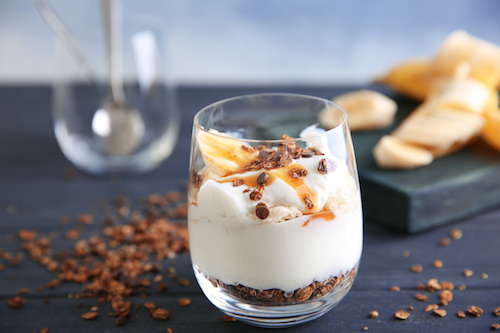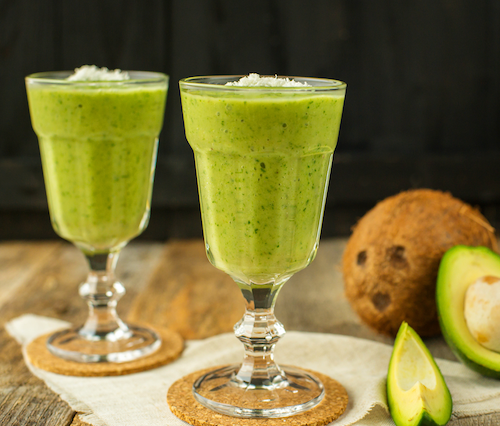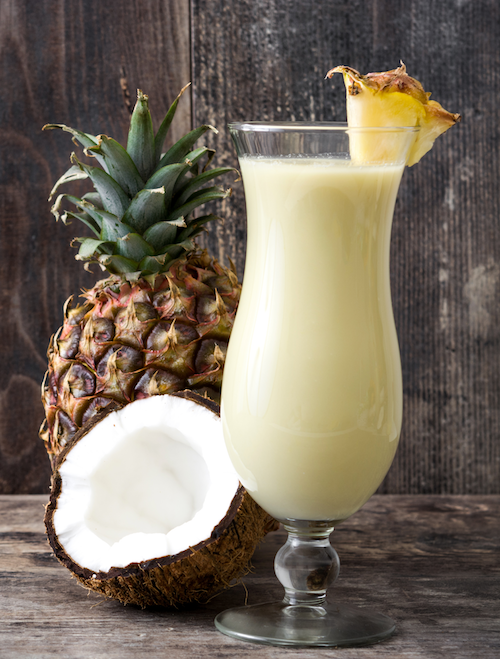Reducing Seasonal Affective Disorder (SAD) Naturally

Coupled with short daylight hours, and the subsequent lack of sunlight, you may suffer from Seasonal Affective Disorder (SAD). SAD means experiencing low energy and increased sadness as a result of decreased sun exposure. Studies estimate that SAD affects as many as 10% of people in northern latitudes.1
Only 3% of Canadians have been formally diagnosed with SAD, meaning that 2 in 3 SAD sufferers are unaware that their lack of light for so many months is getting them down.2
- When your optic nerve senses sunlight, your body secretes serotonin — a mood-boosting neurotransmitter.
- In low light, your production of melatonin, a hormone that lowers body temperature and prompts drowsiness, increases.
Simply put, when you're not exposed to enough sunlight, you're likely to feel low energy.3
If you feel that you experience symptoms of SAD, reach out to your doctor. Until then, opt for supportive food remedies.
Energy Sappers & Stress Inducers
- Bread: Fluffy white bread is draining your energy. Once you’ve consumed refined grains (found in foods such as bread, cookies, pastries or pasta), glucose is quickly released into your bloodstream. When this happens, insulin works to lower blood sugar, resulting in lower energy and leaving you feeling spent.4
- Oatmeal: Even though oatmeal is enjoyed at breakfast in many parts of the world, it is a sedative known to promote sleep! Similar to bread, the carbohydrates in oatmeal cause your body’s insulin levels to rise, which in turn lowers your body’s blood sugar, making you feel tired. In addition, the oats contain melatonin, creating the perfect recipe for a snooze.5
- Candy: While a sugary treat may be tempting when you are feeling low, you will be left exhausted. Furthermore, orexin, a chemical in your brain that helps you feel alert and awake, has been shown to decrease after sugar consumption.6
Battle SAD directly with Vitamin D
Omega-3 Oil with Vitamin D
While Winter will ignite your desire for high-fat, high-carb snacks, opt for Vitamin D-rich foods such as healthy fish (salmon, black cod and sardines). If you're averse to eating fish, fish oil with Vitamin D works in much the same way. Your body produces Vitamin D when it's exposed to direct sunlight, and Vitamin D has been shown to directly reduce the symptoms of Seasonal Affective Disorder.7 In warmer months, you'll need to focus on high Vitamin D foods or supplements if you keep covered or spend most of your time indoors. The good news is that you can request a Vitamin D blood test, through your Medical Doctor or Naturopathic Doctor, to determine your level of supplementation.
With 40% of North American’s deficient in Vitamin D1 2, focus on getting a minimum of 1,000 IU per day.
That said, opt to include more natural sources of Vitamin D because your specific needs could be even higher 4.
Fish & Seafood
One 3.5oz (100g) serving of salmon contains 361 to 685 IU of Vitamin D, or 60-112% of the RDI 5
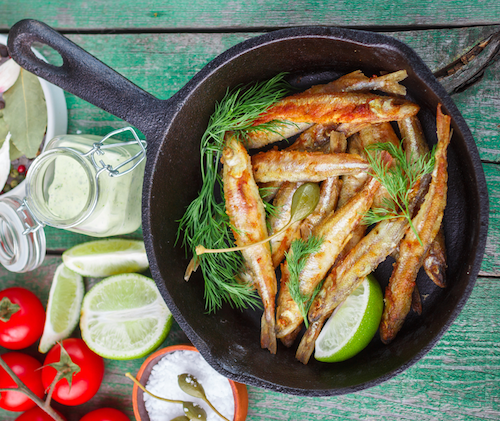
Sardines are a good source of Vitamin D as well — one serving contains 272 IU, or 45% of the RDI 10.
Mushrooms
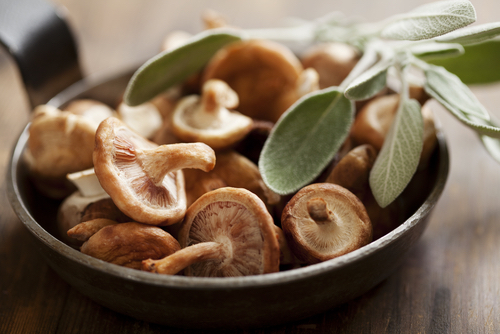
One 3.5oz (100g) serving of dark mushrooms (like Shiitake) are an excellent source of Vitamin D2 with some varieties packing up to 2,300 IU— 400% of the RDI 30. Be mindful that commercially-grown mushrooms are often grown in the dark and contain very little Vitamin D2.
- Vitamin D Hack #1: Make Mushroom Soup!
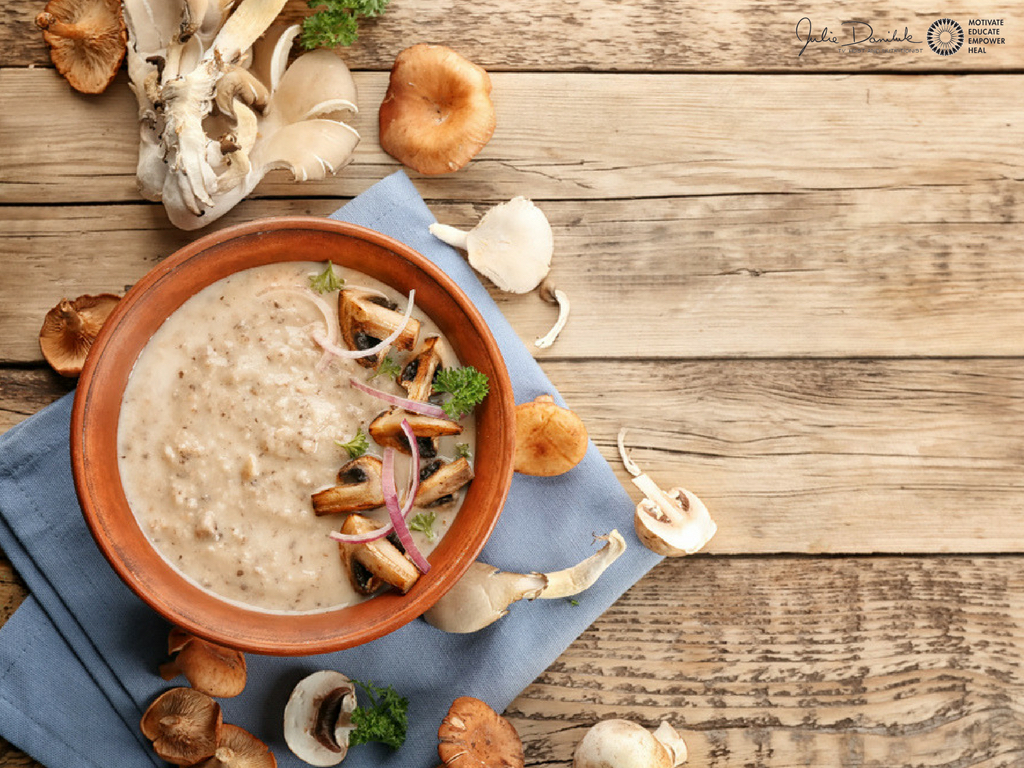
I whip up my favourite mushroom soup recipe during Canada's winter months... in just a few minutes.
Coconut
The ultimate energizer, coconut contains MCTs (Medium Chain Triglycerides), fats that burn like a carbohydrate.11 Coconut water-based smoothies provide electrolytes, which carry electrical charge in your body, giving you an added lift.
- Vitamin D Hack #2: Let’s make an easy coconut yogurt parfait!
Click here to discover my Coconut Yogurt Parfait recipe... adding sugar-free chocolate chips, fresh banana slices and toasted coconut flakes adds an amazing tropical flavour.
Probiotics
Supplementing with probiotics can help reduce stress, anxiety, depression and digestive concerns – especially IBS.
- Vitamin D Hack #3: Upgrade your coffee!
Coffee is a passionate topic for 64% of North Americans; does coffee work for you? Caffeine takes its time to work through your system – one study showed that the half-life of caffeine in healthy adults is 5.7 hours.12 This means, if you consume 200mg of caffeine at mid-day, you will still have 100mg in you at around 5:45pm.
Try sticking to consuming 1 cup of coffee in the morning and then switching to kinder caffeine (tea or chocolate) later in the day. Click here for my deliciously satisfying Coffee Avocado Smoothie recipe.
Battle SAD with Natural Energy Boosters
Licorice
Did you know licorice stimulates your adrenal glands to produce more energy? Licorice actually helps your body preserve its own natural cortisone, stimulates your adrenal glands, and has antibacterial properties. Please note that licorice can raise blood pressure so, if you take this herb regularly, be monitored by your doctor to ensure health and safety.
Beets
One of the best foods you can eat to increase your energy is beets. This root vegetable increases blood flow, which increases nutrient delivery to your muscles. Plus, one study has shown that distance runners were able to run 5% faster after eating beets.
To make a very fast beet dip, take beetroot powder and mix it into a pre-made dip. I like to mix it into Baba Ganoush (roasted eggplant dip) or adding 1tsp to a classic bean dip to create a beautifully delicious, pretty pink dip.
Ashwagandha
Pronounced Ah-sh-wa-gan-dah (aka Indian Ginseng), this herb is a regarded as an adaptogen (helps you adapt to stress while enhancing your energy), bringing your body to a heightened state of resistance to disease through physiological and emotional health. In particular, adaptogens help increase your body's natural resistance to environmental stresses. Ashwagandha is best known for boosting thyroid function to prevent winter weight gain.8 9
Maca
Typically found in the Andes, maca grows in high elevations where the land is barren and weather conditions extreme. These harsh conditions result in very high mineral content that translates into maca root being very high in nutrients, qualifying it as a superfood. Maca is also one of the most powerful adaptogenic plants known.10
Click here to try my Maca Piña Colada recipe (it's a perfect alcohol-free party beverage to share). The ingredients in this recipe will have your adrenals so pumped, you’ll feel a smooth, natural energy “high”.
By utilizing Vitamin D-rich foods throughout your winter diet, you can reduce the effects of SAD and live a happy and energized season!
Learn how to boost your mood, energy, and lifespan with the Meals That Heal Thrive Hive online membership!

References
- Stuart Kurlansik Ph.D. and Annamarie Ibay MD, “ Seasonal Affective Disorder.” American Family Physician
- Quick Facts: Mental Illness and Addiction in Canada. (2009).
- Seasonal Affective Disorder (SAD) - Canadian Mental Health Association, Ontario Division. (2014).
- Pyykkönen AJ1, Isomaa B, Pesonen AK, Eriksson JG, Groop L, Tuomi T, Räikkönen K. “ Subjective sleep complaints are associated with insulin resistance in individuals without diabetes: the PPP-Botnia Study.” Diabetes Care. 2012 Nov;35(11):2271-8. doi: 10.2337/dc12-0348. Epub 2012 Jul 26.
- Andrew Vickers, Catherine Zollman and Roberta Lee “ Herbal medicine: Oats.” West J Med. 2001 Aug; 175(2): 125–128. PMCID: PMC1071505
- Berlin I1, Grimaldi A, Landault C, Cesselin F, Puech AJ. “ Suspected postprandial hypoglycemia is associated with beta-adrenergic hypersensitivity and emotional distress.” J Clin Endocrinol Metab. 1994 Nov;79(5):1428-33.
- Akash S. et al. (2013). " Improving the Vitamin D status of Vitamin D deficient adults is associated with improved mitochondrial oxidative function in skeletal muscle." The Journal of Clinical Endocrinology & Metabolism 98 (3), E509-E513.
- Rosenthal N. E., Genhart M., Jacobsen F.M., et al. (1987). " Disturbances of appetite and weight regulation in seasonal affective disorder." Annals of the New York Academy of Sciences 499, 216-230.
- Wagner, H., Heidrun Norr1, Munchen and Hike Winterhoff “Drugs with Adaptogenic Effects for Strengthening the powers of resistance” Munster, Zeitschrift fur Phytotherapie 13: 42-54 (1992).
- H O Meissner, P Mrozikiewicz, T Bobkiewicz-Kozlowska, A Mscisz, B Kedzia, A Lowicka, H Reich-Bilinska, W Kapczynski, I Barchia “ Hormone-Balancing Effect of Pre-Gelatinized Organic Maca (Lepidium peruvianum Chacon): (I) Biochemical and Pharmacodynamic Study on Maca using Clinical Laboratory Model on Ovariectomized Rats” International Journal of Biomedical Science 2006 Sep; 2(3): 260–272. PMCID: PMC3614604
- St.Onge M.P., Mayrsohn B., O’Keeffe M., et al. (2014). " Impact of medium and long chain triglycerides consumption on appetite and food intake in overweight men." European Journal of Clinical Nutrition, 1-7.
- Statland BE, Demas TJ. “ Serum caffeine half-lives. Healthy subjects vs. patients having alcoholic hepatic disease.” Am J Clin Pathol. 1980 Mar;73(3):390-3.

